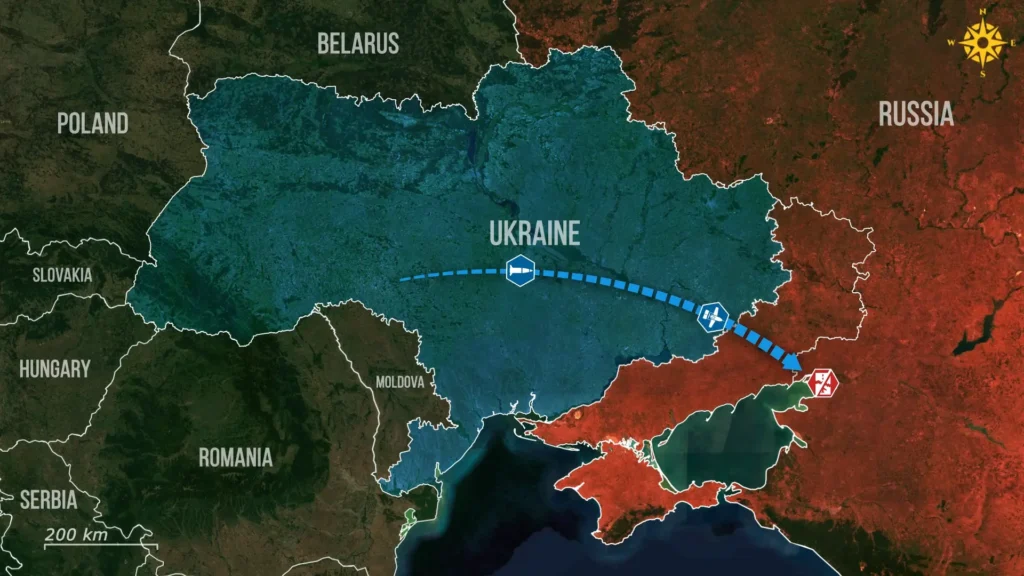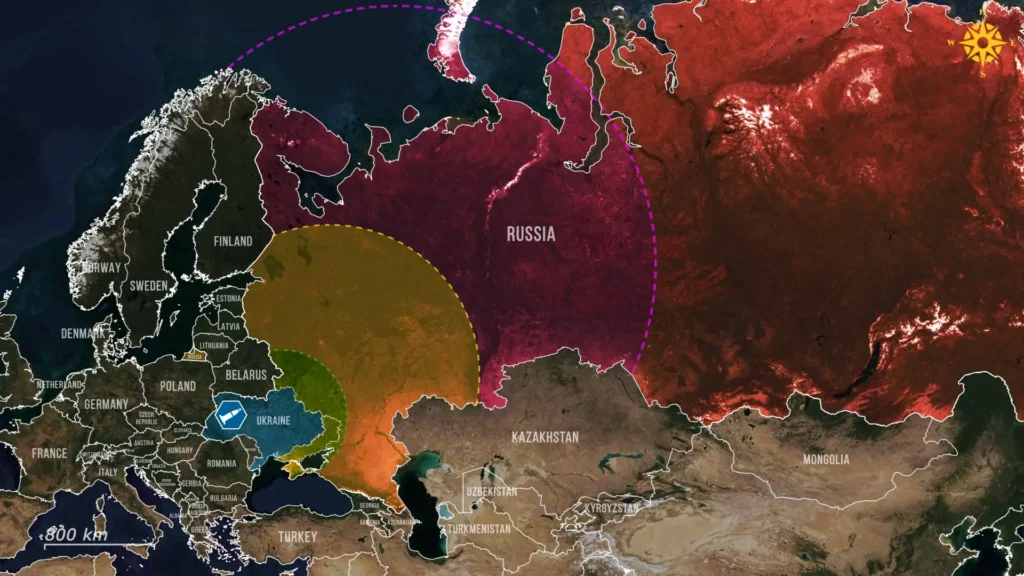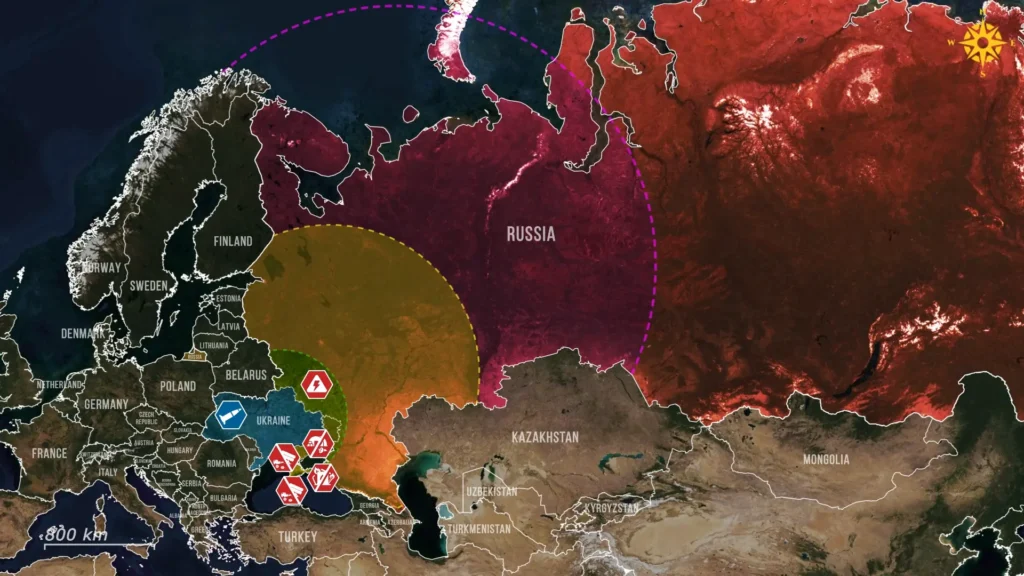Today, there are important updates from Ukraine.
Here, amid the latest uncertainty about Western military support for the country, the Ukrainian defense industrial base is building more missiles than ever to support an operation deep inside Russia.
As a result, dozens of Neptune and Flamingo missiles are now tearing up the skies above Russia, destroying high-value targets of all kinds and disrupting enemy efforts.

Taganrog airfield strike destroys rare Russian aircraft
Ukrainian forces conducted one of their most technologically complex deep-strike operations to date, combining Neptune missiles with a swarm of around fifty FP-2 drones to hit the Taganrog airfield. The strike targeted Russia’s A-60 airborne laboratory, an extremely rare aircraft used for testing laser weapon systems and the A-100, Russia’s next-generation Awacs prototype.

Satellite imagery released afterward showed both aircraft destroyed, along with damage to the final assembly hall and a hangar used to modernize Tu-95MS bombers, which launch Kinzhal cruise missiles against Ukrainian cities almost every night.

Neptune missiles overwhelm Novorossiysk defenses
There is a visible rise in Ukraine's use of Neptune missiles across Russia, with one of the most notable cases being the multi-axis strike on Novorossiysk, where upgraded Long Neptune missiles and drones damaged seven S-400 launchers guarding the port.
Satellite Firms data captured multiple fires at the cargo and oil terminals, as well as the long-range air-defense site overlooking the harbor.
Analysts reviewing pre-strike imagery counted at least seven S-400 launchers inside the blast zone. Post-strike visuals showed fuel detonations and explosions consistent with secondary warhead cook-offs.
This strike followed another Neptune attack launched from a modified Tatra chassis on the local oil terminal, temporarily halting 2.2 million barrels per day of crude exports, causing an estimated 70 million daily US dollar loss.

Strikes expand to power grids and defense factories
Ukraine has expanded its Neptune campaign even deeper into Russia, as Long Neptune missiles hit the Oryol Thermal Power Plant and Novobryansk substation, disrupting grids that support Russian defense factories.
Another strike targeted the Progress plant in Cheboksary, a key site producing navigation electronics for ballistic missiles, drones, and guided bombs, causing a major fire and forcing production to halt.

Long Neptune upgrades extend range and lethality
These operations reflect the major upgrades introduced to Ukraine's Neptune missile family, with the Long Neptune variant having reached an operational range of up to 1,000 kilometers, nearly quadruple the original model through an expanded fuselage with increased fuel capacity.
Its warhead has grown to 350 kilograms, enabling the destruction of hardened facilities like oil terminals, air defense sites, and aircraft shelters. The missile now supports terrain-following flight and potential infrared terminal homing, allowing it to fly extremely low to the ground and evade radar, as demonstrated by multiple recent successful strikes.

Flamingo cruise missile emerges as strategic weapon
Parallel to Neptune's evolution, Ukraine steps up the use of the Flamingo missile, the domestically developed cruise missile with an unprecedented 3,000 kilometer reach.
Trending Now

Powered by a turbofan engine, it flies up to 950 kilometers per hour with a massive 1,150 kilogram penetrating warhead capable of punching through up to ten meters of reinforced concrete. Its guidance system combines inertial navigation, terrain mapping, and GPS updates, achieving strike accuracy within roughly 14 to 50 meters, highly effective for strategic energy, air-defense, and command targets at a cost of around 500,000 US dollars per missile.

Flamingo played a confirmed role in the recent Novorossiysk operation, contributing to major damage to the strike, as it only needs one to hit to destroy the target due to its powerful warhead two-and-a-half times as powerful as Storm Shadow.
Earlier Flamingo deployments struck the Oryol power node and multiple military sites in Crimea, Berdiansk, and Yevpatoria again alongside Neptune missiles and drones.

Production surge threatens to overwhelm Russian defenses
Given current Ukrainian production levels, Russia's situation is set to deteriorate further. Ukraine now manufactures 40 to 50 Neptune missiles per month, while Flamingo output stands at around 90 monthly, with plans to scale up even more, as some elements like missile fuel are produced abroad and are not vulnerable to Russian strikes.


Such volumes can overwhelm Russian air defenses, cripple logistics and energy grids, and impose billions in economic losses while diverting Moscow's resources away from the front.

Strategic independence transforms Ukraine's war-fighting capability
Overall, Ukraine's development of long-range strike capability independent of Western approval is strategically transformative.
The combination of mass-produced Neptune and Flamingo missiles ensures that Russia's strategic rear, energy infrastructure, and military-industrial facilities are no longer safe.
As Ukraine expands production and enhances capabilities, its ability to shape the war deep inside Russian territory will only increase, imposing relentless pressure on the Russian war machine with almost no place left to hide.
In our regular frontline report, we pair up with the military blogger Reporting from Ukraine to keep you informed about what is happening on the battlefield in the Russo-Ukrainian war.





